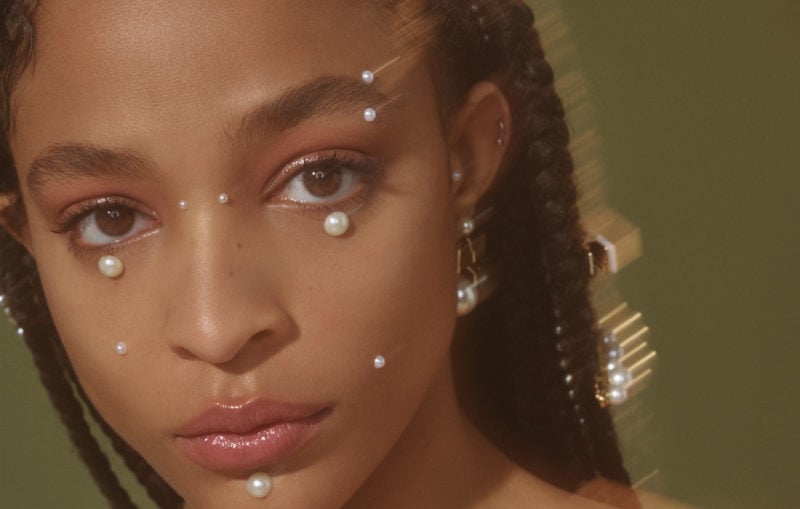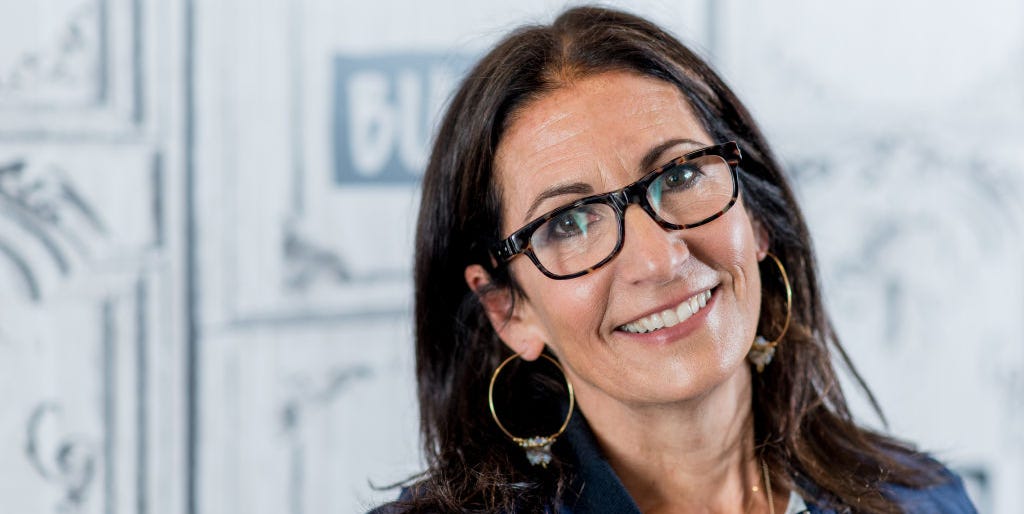
On TikTok, aging is the hot new trend
Every day my TikTok algorithm feeds me dozens of anti-aging solutions. I’m 23. My skincare routine consists of washing my face and applying moisturizer, yet the videos I get served urge me to do more — apply more serums, try more fancy tech solutions for taut skin, and spend more time in front of the mirror. The “get ready for bed with me” or “day in my life” TikToks that frequent my For You Page aren’t ads; they’re something more insidious: a normalized culture of costly, laborious anti-aging routines targeted at young women like me.
In one of these videos a 31-year-old woman applies silicon patches around her mouth and on the center of her forehead, ending her regimen by taping her mouth shut to prevent the appearance of a double chin, tired eyes, and drooping cheekbones. Another creator sings the praises of an “anti-wrinkle” straw. A 23-year-old recommends serums to achieve “glass skin.” Others advise their followers to lay on their backs while they sleep and to limit their facial movements throughout the day. The tag “anti-aging” has a whopping 3.1 billion views on the app with “anti-aging skincare” amassing 392.2 million.
TikToks that frequent my For You Page aren’t ads; they’re something more insidious: a normalized culture of costly, laborious anti-aging routines targeted at young women like me.
When German beauty and skincare creator Rose Friederike(Opens in a new window) posted a TikTok of her pumping a pink device full of air on her face — a cross between a chin strap and a blood pressure monitor — for her 4.3 million followers, there was a rare moment of mainstream outrage. The caption reads, “face lift ASMR.” Her video was flooded with comments that “it’s okay to age” with one user dueting the video to ask, “where do we draw the line?”
Katie Cameron, a 29-year-old freelance artist, finally had enough of the constant demonization of daily activities in the never-ending quest to preserve youth. Inspired by body neutrality, the philosophy that encourages accepting your body as it is, she posted a video(Opens in a new window) captioned, “starting a pro aging routine out of spite for the grotesque anti aging industry.” Parodying the popular anti-aging routine videos, Cameron slurps out of a straw, repeatedly furrows and raises her brow, smiles, and squints her eyes. The TikTok is fittingly soundtracked by indie musician Mitski screaming.
“So many of these anti-aging tips are just don’t do normal things that people do. Like don’t emote, don’t eat like this, don’t drink like this,” Cameron told Mashable. “It’s very restrictive, so I thought it’d be freeing to do something where I’m just smiling and enjoying seeing my face move.” Many of the over 100,000 people who viewed her video found her exaggerated facial movements liberating as well. One comment reads, “as someone fighting a fear of aging, thank you for this.”
The Mitski audio Cameron used was initially posted by @undefeatedshitposter2 (Opens in a new window)with overlapping clips of TikToks that encapsulate the expectations for young women perpetuated on the platform, including buccal fat removals, “preventative” Botox, and wrinkle-prevention exercises. On Jan. 11 @sylviesbritishaccent(Opens in a new window) posted a similar video, featuring screenshots of women shaving their faces, donating blood to burn calories, and doing a ten-step bedtime routine, soundtracked to a compilation of women screaming in films like Pearl and Midsommar.
Body neutrality is one way to reject diet culture. Here’s what that means.
This moment comes two months after internet sweetheart Julia Fox announced(Opens in a new window), “aging is fully in.” In the much discussed video(Opens in a new window) she goes on to say, “If I see another product that says anti-aging on the label I’m going to sue because I’m going to age regardless.”
“It made a lot of people feel good to hear that and from somebody with fame and influence. At the same time, Julia Fox gets neuromodulator injectables to freeze her wrinkles and just a couple of months ago did a paid ad for Xeomn, a Botox alternative,” Jessica DeFino, beauty writer and author of The Unpublishable(Opens in a new window), a newsletter that critically examines the beauty industry, explained to Mashable. “It’s exciting to hear that some people are interested in pushing back on anti-aging marketing, but it’s really important that we consider our behaviors when we are doing that because pro-aging language means nothing if it is not met with pro-aging behavior and actually aging faces.”
The beauty industry has started embracing pro-aging rhetoric, but their end goal remains the same: profit off of women’s insecurities. In a 2017 look at the business of anti-aging for The New York Times Magazine(Opens in a new window) writer Amanda Hess wrote, “Beauty expectations for women haven’t been revised so much as they’ve been rebranded, with words like ‘renewing’ and ‘vitality’ and ‘radiant’ serving as cutting-edge euphemisms for ‘youthful.’ The implication hiding beneath is an unsettling one. You may think the stigma against older people is social, a construction of our culture and what it chooses to value. The ads suggest otherwise: Youth, they seem to say, is simply natural.” But creators on TikTok aren’t so coy.
The beauty industry has started embracing pro-aging rhetoric, but their end goal remains the same: profit off of women’s insecurities.
The change in marketing hasn’t affected the anti-aging industry’s earnings. It continues to grow. As reported by Vox(Opens in a new window), the anti-aging industry grew from $3.9 billion in 2016 to $4.9 billion in 2021 in the U.S. During the same period, it went from $25 billion to nearly $37 billion globally. Cosmetic surgery is booming. A survey of members by the American Society of Plastic Surgeons(Opens in a new window) found that demand for cosmetic surgery surged since the pandemic began, driven by women under 45. The survey also identified Botox as the most popular cosmetic noninvasive procedure and facelifts as the second-most popular surgical cosmetic procedure.
Coined the “Zoom boom,”(Opens in a new window) this growth in cosmetic surgery is in part due to a desire to look good on camera. The Huffington Post reported on how the ubiquity of FaceTune(Opens in a new window), a popular photo retouching app, has spurred young women to get cosmetic surgery in order to look like their edited photos. NBC News uncovered(Opens in a new window) that influencers, including those on TikTok, are being offered cheap cosmetic procedures in exchange for promotion. The hyper-awareness of how our faces look due to online meetings, selfies, and creating TikToks, combined with the prevalence of filters, has proliferated unreal expectations.
The anti-aging trends on TikTok all seek the same outcome, but it goes by different names: “glass skin,” “jello skin,” “vampire skin,” and “glazed donut skin.” But they all mean the same thing. “A lot of beauty trends today are all about getting the skin in real life to look as filtered as possible, which generally means no deviation in tone, or texture, poreless, wrinkle free, no fine lines, just sort of this flat, reflective, shiny glow, which is not what a face looks like. That’s what a phone screen looks like,” explained DeFino. “There is a lot of glorification of youth tied up in that because part of this flat, glassy skin means trying to mitigate any sort of wrinkles, fine lines or, sagging that may appear as you get older.”
Slugging, gua sha, rice water, and more: How stolen cultural beauty practices feed viral videos
There’s also the fact that as algorithmically dictated feeds have overtaken the chronological content of our friends, anti-aging feels more inescapable than ever on platforms like TikTok. But the tide is slowing turning.
With viewers becoming more cognizant of the anti-aging rhetoric on their FYPs, the pro-aging movement is picking up steam with creators like Ting Ma leading the way. The 52-year-old’s bio reads, “my face carries all my memories. Why would I want to erase them?” Ma first gained popularity on Instagram(Opens in a new window) for her fashion and beauty content, and during quarantine she started posting pro-aging videos as well. In one of the videos pinned to Ma’s TikTok, she says, “I don’t want to look 30 when I am 52, why should I look younger than my age. I earned 52 with dignity. I wear my wrinkles and gray with pride. Aging is a privilege. It is to be celebrated.” One comment reads, “as a 20 year old, I can say that we need this kind of representation.” Another says, “thank you I love this mentality! I am done with people taping up their faces and doing ‘preventative Botox.'”
“At the beginning I wanted to raise awareness that I’m not invisible and that we should celebrate a woman’s life,” Ma explained to Mashable. On Instagram her audience is around her age, but when she started posting on TikTok her videos reached a much younger audience. “I’m happy I can help young people feel hopeful about aging because society has put so much pressure and unrealistic expectations on women,” said Ma. Pro-aging content is a reaction to the unhealthy beauty standards perpetuated by TikTok, in which youth is celebrated — and while you might not be able to rewire the desire to appear young immediately, consuming more pro-aging content is a start.
And this movement isn’t just happening on TikTok. The tides are changing. Five days ago, YouTuber Jordan Theresa posted a video titled, “TikTok is bad for women, actually”(Opens in a new window) unpacking the standard of beauty created by TikTok. On Jan. 12 writer Amanda Fortini tweeted(Opens in a new window), “Big, big backlash coming against Botox and fillers, I can feel it. Natural, imperfect, beautifully flawed (and gasp, even wrinkled) faces are going to be the chic thing.” This trend is in line with Gen Z’s interest in more naturalistic and casual feeds on apps like BeReal and through random photo dumps and messy vlog-style videos that aren’t filtered and over-edited.
The point is not to make aging cool or trendy, but to allow people to look like they look without having to feel on trend.
The goal, DeFino said, is to allow “all faces to exist exactly as they are without facing any social, financial, economic, or political consequences.”
The recent backlash against anti-aging content, whether it be through creators like Ma or parody videos like Cameron’s, makes me hopeful that young women will eventually stop being fed videos about glass skin in favor of women embracing their face’s natural texture. DeFino is more cautious.
“While it might be well-intentioned to make aging chic, it’s actually enacting a lot of the same behaviors as anti-aging, but in an equal opposite manner,” she warned. “The point is not to make aging cool or trendy, but to allow people to look like they look without having to feel on trend. Aging isn’t a trend. It’s an inevitability.”

/https://tf-cmsv2-smithsonianmag-media.s3.amazonaws.com/filer_public/f5/37/f537aed7-6cf3-4afc-a4d5-1a857b645e4a/deena_sveinsson_wildlife_photographer_of_the_year.jpg)



